Crafting a Successful Win-Loss Program to Enhance Sales
By: Greg Hershberger
9/18/2023
For group benefits providers, win-loss research seems like a no-brainer to include in a comprehensive research program.
Why did we win the business? Was our product head and shoulders above the competition? Was our pricing too good to pass up? Are our salespeople simply rock stars, selling themselves just as much as selling our products and services?
What about losses? We know we have a great product. Did a competitor develop a new capability that we’re unaware of? Did we send the wrong people to the finalist meeting? Maybe our PowerPoint template is finally ready to be upgraded from the deck we’ve been using since dinosaurs roamed the earth?
These are all pressing questions that sales and insights functions need answers to. But while the value in win-loss research is not hard to sell, it can be difficult to design a program that will yield high response rates and engage both respondents and internal stakeholders with the study. Below are a few suggestions for getting the most out of your win-loss program.
Institutionalize the Program & Engage the Internal Team (beyond research)
A half-hearted win-loss program is a doomed win-loss program. We’ve all received emails from dubious or unknown senders asking for feedback on some sort of recent interaction with a company. We’ve also all sent those emails straight to the trash bin without a second thought. Speaking from experience, if the only form of participant outreach for a win-loss program looks like this, you’re likely looking at a response rate of 1-2% at best. But I’ve seen response rates of 50%+ when the right people are involved in soliciting feedback. Below are some Dos and Don’ts on how to ingrain your win-loss program into your culture.
Do…
- Develop mixed-mode outreach.
- Run a pilot to set benchmarks and targets for response rates (separate response rate benchmarks should be set for wins vs. losses).
- Incentivize sales team to reach target response rates by including as performance measures.
- Create monthly or quarterly lists for outreach.
- Share results with appropriate parties internally – sales, customer service, product, tech, etc.
- Use a trusted outside partner to conduct the interviews. Internal interviewers bring bias to the conversation and independent interviewers are more likely to elicit fully truthful responses and can better direct sensitive feedback to appropriate parties.
Don’t…
- Send an impersonal automated survey. Personal touch is always preferred, and automated emails have become so commonplace and easy to spot, that it almost guarantees a place in the trash bin.
- Wait too long after a decision is made to conduct the interview.
- Conduct the interview too quickly after a decision is made. Give it at least a couple weeks – this type of research requires balance and tact so as to engage but not overwhelm/annoy.
- Incentivize sales team for high scores or ratings by respondents. This can lead to bargaining, uncomfortable conversations, and biasing of responses.
- Over-estimate response rate. 100% response rate sounds nice, but it won’t happen. Sometimes you just need to let things go.
- Use an internal moderator/interviewer.
Framing – Mutual Benefits
This point goes hand-in-hand with institutionalizing the program: if the benefits of participating in the research are not framed properly, your response rate will suffer. Participants, particularly losses, will be much more likely to agree to an interview if it’s clearly communicated to them how their feedback will be used. Who will see the results? How will the results be used to improve performance in years to come? Successful win-loss programs will explicitly state the benefits of participation.
While we will almost always recommend providing win-loss program research participants with a nominal incentive for participation, the benefits to participating can and should go beyond a Starbucks gift card.
Broaden Scope – You aren’t just selling to employers
While HR professionals and company executives are most often the final decision-makers when it comes to selecting group benefits, there are almost always other players involved. For health and other group insurance products, oftentimes a benefits broker or consultant will play a strong role in the decision-making (or at least information gathering) process. Outside consultants and financial advisors may play a role in selecting retirement plans. Sometimes external legal counsel will also have a seat at the table.
These players not only can bring a perspective on what their client was looking for and why they made the decision that they did, but they can also speak to broader industry trends that are otherwise unknown to individual employers. Second, speaking to brokers and advisors will give your distributors the opportunity to get to know you better, and vice versa. Interviewees are perceptive: they don’t just answer questions, but also think about the questions you ask and what that means for them. Starting the conversation can lead to better understanding of each other and (hopefully) more business opportunities down the road. Lastly, broadening scope gives your team a higher likelihood of “checking the box” that you received feedback from a particular organization. It’s a lot easier to recruit from a list of 3 potential respondents than a list of one!
Win-loss research takes commitment from both the research users and partners used to execute the program. Hopefully these tips will help as you think through your win-loss strategy. For more information on how Greenwald Research can help formulate or overhaul your win-loss research processes, contact us.








